Unraveling the Skin Microbiome in Hidradenitis Suppurativa: Implications for Treatment and Disease Progression
- PMID: 40217873
- PMCID: PMC11989415
- DOI: 10.3390/jcm14072424
Unraveling the Skin Microbiome in Hidradenitis Suppurativa: Implications for Treatment and Disease Progression
Abstract
Background: Hidradenitis suppurativa (HS) is a chronic, disabling, and disfiguring inflammatory disease with a complex, incompletely elucidated pathogenesis. The role of skin dysbiosis in the development and progression of HS has not yet been clarified. Methods: We performed an observational, prospective culture-based study that included 40 HS patients and analyzed the bacterial load and diversity in HS skin lesions, their correlation with disease severity, and several host and environmental factors. Additionally, we investigated the prevalence of antibiotic resistance and determined the resistance profile of bacterial strains isolated from chronic HS lesions. Results: An impressive number and diversity of bacterial strains were isolated from both superficial and deep HS lesions. 201 aerobic and anaerobic bacterial strains were isolated, polymicrobial growth being detected in the majority of samples. The most frequently isolated bacteria were Staphylococcus epidermidis, Staphylococcus aureus, Staphylococcus lugdunensis, Peptoniphilus spp., and Enterococcus faecalis in superficial lesions and Staphylococcus epidermidis, Staphylococcus aureus, and Corynebacterium tuberculostearicum in deep lesions. A significantly higher bacterial density and diversity was found in male patients, regardless of the affected area and in patients with severe HS. The proportion of bacterial strains resistant to antibiotics was lower in our study (8.95%) compared to the previously reported data. Conclusions: Our findings indicate dysbiosis as a key player in the initiation and maintenance of the inflammatory process in HS. Further large-scale, prospective studies are required to comprehensively characterize the microbiological landscape of HS and shed light on its contribution in the pathogenesis of the disease.
Keywords: antibiotic resistance; hidradenitis suppurativa; inflammation; skin microbiome.
Conflict of interest statement
The authors declare no conflicts of interest.
Figures
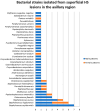
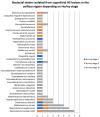
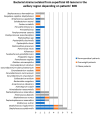
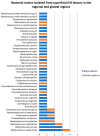
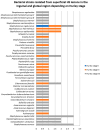
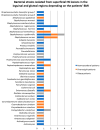









References
-
- Velpeau A. Dictionnaire de Medicine, un Repertoire des Sciences Medicales sons le Rapport, Theorique et Pratique. 2nd ed. Nabu Press; Paris, France: 1839. p. 91.
-
- Verneuil A. Etudes sur les tumeurs de la peau et quelques maladies des glandes sudoripores. Arch. Gen. Med. 1854;4:693–705.
-
- Schiefferdecker B. Die Hautdrusen des Menschen und der Saugetierre ihre Histologishe und Rassenanatomische Bedeutung, Sowie Die Muscularis Sexualis. 1st ed. E. Schweizerbert; Stuttgart, Germany: 1922.
Grants and funding
LinkOut - more resources
Full Text Sources
Miscellaneous

